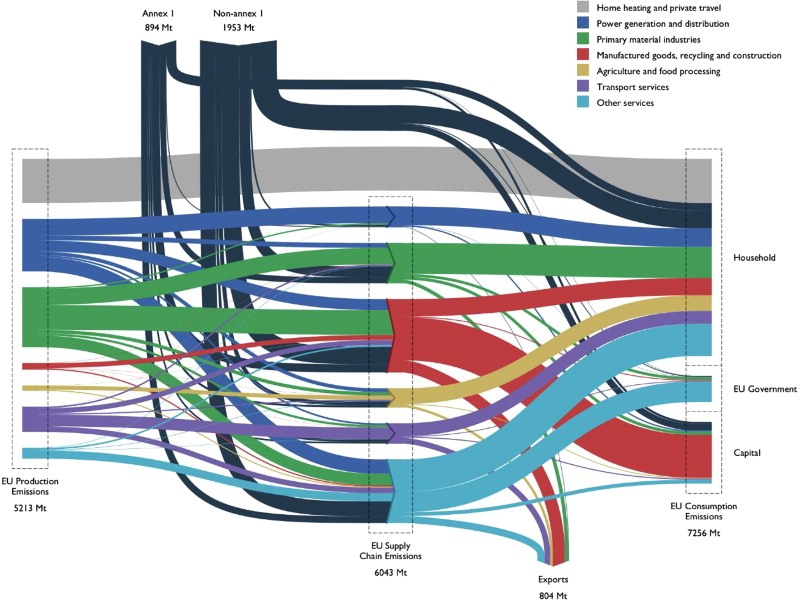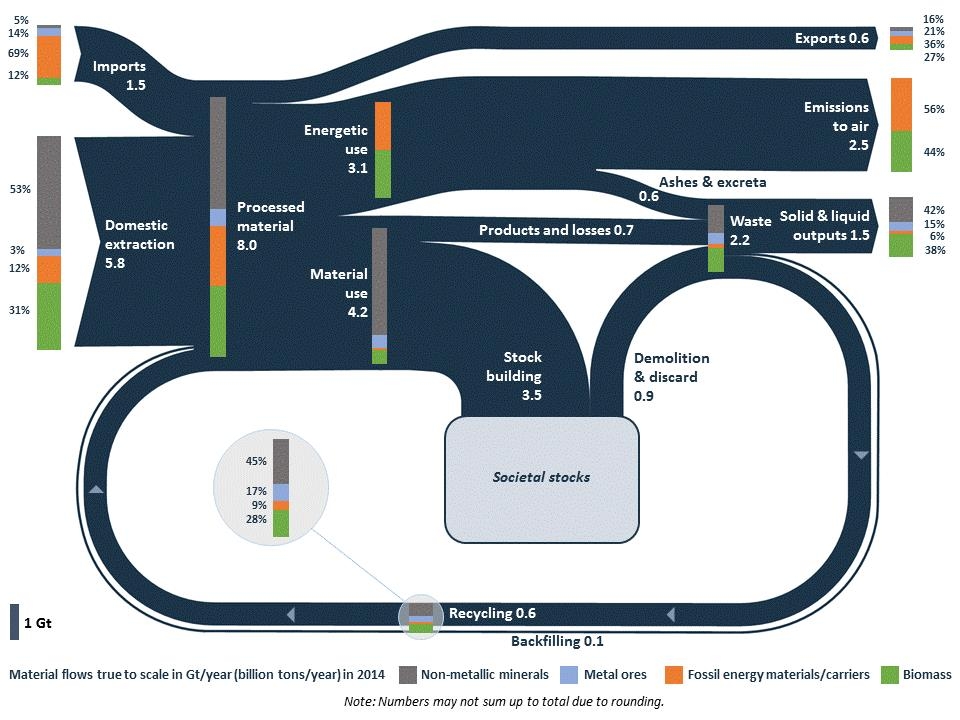This comprehensive and well-structured Sankey diagram on food production, waste and consumption is featured in an article ‘Quantification of food waste per product group along the food supply chain in the European Union: a mass flow analysis by Carla Caldeira et al. (published as open access article under CC BY license in: Resources Conservation and Recycling · June 2019). (Addendum 23/10/20: The Sankey diagram is a (minor) adaptation of a diagram produced by Kemna et al. 2017 in a study from VHK for the European Commission. See comments section for link). The paper “presents a high-level top-down approach to food waste accounting in the European Union.”
Flows are in megatonnes (Mt) wet mass for the year 2011. The diagram shows “feed and food flows, excluding soft drinks, mineral waters and some non-perishable foodstuffs (salt, coffee, etc.)”.
The figure is split in two parts. On the left we see the stages production, processing and distribution, with gaps between the streams to better be able to distinguish them. The food flows reaching the consumption stage (365 Mt) are bundled and shown in a much more compact diagram inset, but still on the same scale, it appears.
Here we can differentiate the amount going to food service (restaurants etc.) and consumption in private households. We also learn that approximately 60 Mt of what is being purchased for consumption still ends up as food waste.
In the other hand, a large portion of rejects and waste in the production stages is fed back into the system (chartreuse colored flow at the bottom) and being used as animal feed. Much more detail there to discover…
Check out this related Sankey diagram on Material Flows in the U.S. Food System

